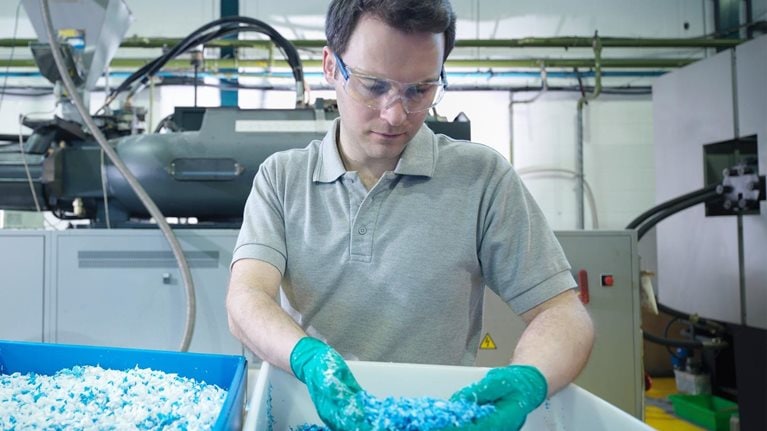The next 10 to 15 years will present major opportunities for consumer companies. Some 1.8 billion people are expected to join the global consuming class by 2025, a 75 percent increase over 2010.1 Consumer spending should rise even more than the number of consumers as household incomes swell and people use bigger shares of their budgets to buy consumer goods. China, for example, is on track to gain 100 million working-age consumers by 2030, and it is expected that their spending on personal products will be double the current rate.2
These trends contribute to a strong growth projection for the consumer sector: 5 percent a year for the next two decades. For investors, this level of expected growth should be good news. The worth of a company can be expressed as the sum of two values: the present value of the company’s current cash flows extended into the future, and the present value of the expected growth in its cash flows. When we studied the enterprise value of the top 50 publicly traded consumer-packaged-goods (CPG) companies, we found that their expected cash-flow growth makes up roughly half of their current value. Because of this, factors that alter these companies’ growth projections will also have a major effect on their total returns to shareholders (Exhibit 1).

One condition that can slow a company’s growth is poor sustainability performance, as measured in environmental and social impact. To make and sell goods, consumer businesses need affordable, reliable supplies of energy and natural resources, as well as permission from consumers, investors, and regulators to do business. But companies can no longer take those enabling factors for granted. Indeed, scientific consensus, along with pledges by governments and business leaders—including the leaders of some of the largest consumer companies—calls for dramatic improvements in sustainability performance.
For example, the Paris Agreement, reached by 195 countries at the United Nations climate-change summit in December 2015, aims for reducing global greenhouse-gas emissions enough to prevent the planet from warming by more than two degrees Celsius. To cut their emissions in line with the Paris target while increasing sales at the projected rate of 5.3 percent a year, CPG companies would have to lower their carbon intensity—the amount of greenhouse gas emitted per unit of output—by more than 90 percent between 2015 and 2050 (Exhibit 2).

Would you like to learn more about our Sustainability & Resource Productivity Practice?
This figure suggests that consumer companies will have to greatly reduce the natural and social costs of their products and services in order to capitalize on rising demand for them without taxing the environment or human welfare. To that end, some companies will benefit from innovations that allow products to be made using less energy and material and to be reused or recycled with ease (see “Toward a circular economy in food”). As we explore in the rest of this article, consumer businesses are likely to find that their supply chains hold the biggest opportunities for breakthroughs in sustainability performance.
Supply chains: A missing link for sustainability
A high-functioning supply chain—the entire hierarchy of organizations, including energy providers, involved in making and distributing goods—can allow a consumer company to manage two types of sustainability-related risks. One type of risk has to do with the sustainability impact of providing goods and services to customers. The typical consumer company’s supply chain creates far greater social and environmental costs than its own operations, accounting for more than 80 percent of greenhouse-gas emissions and more than 90 percent of the impact on air, land, water, biodiversity, and geological resources (Exhibit 3). Consumer companies can thus reduce those costs significantly by focusing on their supply chains.

A second type of risk occurs because sustainability impact can interfere with consumer companies’ supply chains. GrainCorp, a large Australian agriculture business, reported that a drought cut its grain deliveries by 23 percent, leading to a 64 percent drop in 2014 profits.3 Unilever estimates that it loses some €300 million per year as worsening water scarcity and declining agricultural productivity lead to higher food costs.4 In 2014, a ranking of the world’s 100 most reputable companies included 8 apparel companies. Of those, 2 were dropped from the ranking in 2015, following the deadly collapse of the Rana Plaza factory in Bangladesh, which had been making goods for them, and they were left off the list in 2016.5
Notwithstanding the sustainability risks that lie in supply chains, relatively few companies are working with their suppliers to manage these risks. As an example, consider how businesses are addressing the climate impact of their supply chains. Of the companies that report their greenhouse-gas emissions to CDP, a nonprofit organization that promotes the disclosure of environmental impact data, only 25 percent say they engage their suppliers in efforts to reduce emissions.6
Even when companies attempt to influence their suppliers, they are likely to run into challenges. The biggest one may be that consumer companies do not deal directly with all the firms in their supply chains. Primary suppliers routinely subcontract portions of large orders to other firms, or they rely on purchasing agents to place orders with other firms. Subcontracting is especially common in the apparel industry; the fast-fashion business in particular requires large volumes of garments to be made in short time frames. Subcontractors can be managed loosely, with little oversight regarding workers’ health and safety.
Conditions such as these prevent consumer companies from knowing what sustainability impact occurs in segments of the supply chain where the impact is likely to be worst. In a recent survey by The Sustainability Consortium (TSC), a nonprofit organization dedicated to improving the sustainability of consumer products, less than one-fifth of the 1,700 respondents said they have a comprehensive view of their supply chains’ sustainability performance. More than half reported being unable to determine sustainability issues in their supply chains.7 Until consumer companies identify the sustainability problems in their supply chains, they cannot begin to work with their suppliers on solving those problems.
Three approaches to improving sustainability in supply chains
In the eyes of shoppers and investors who are concerned about the sustainability of the goods they buy and the companies they own stakes in, consumer businesses are responsible for ensuring that their supply chains are managed well. These companies are also in a strong position to influence their suppliers. We believe three approaches can help consumer companies make their supply chains more sustainable. These include identifying critical issues across the whole supply chain, linking the company’s supply-chain sustainability goals to the global sustainability agenda, and helping suppliers manage their impact.
Locate critical issues across the whole supply chain
To understand the impact of making consumer goods, companies must determine how natural and human resources are used at every step of the production process, whether in the supply chain or in direct operations. Companies must also consider a wide range of environmental, social, and economic issues. The tremendous variety of consumer products means that these issues can differ significantly from one product to another. For example, manufacturing LCDs causes the emission of fluorinated greenhouse gases, while coffee plantations are prone to hire underage workers to cultivate and harvest coffee beans.
Several organizations offer measurement frameworks and instruments that can help companies find the most critical sustainability issues in their supply chains:
- TSC has built a set of performance indicators and a reporting system that highlights sustainability hot spots for more than 110 consumer-product categories, covering 80 to 90 percent of the impact of consumer products. TSC identified the hot spots and developed the performance indicators for them by reviewing scientific research and consulting with more than 100 stakeholder organizations.
- World Wildlife Fund (WWF) offers more than 50 performance indicators for measuring the supply-chain risks associated with the production of a range of commodities, as well as the probability and severity of those risks.
- The Sustainability Accounting Standards Board has developed standards that help public companies across ten sectors, including consumer goods, to give investors material information about corporate sustainability performance along the value chain.
- CDP and the Global Reporting Initiative have created standards and metrics for comparing different types of sustainability impact.
Link supply-chain sustainability goals to the global sustainability agenda
Once companies know where their supply-chain issues are, they can set goals for lessening the resulting impact. Ideally, they will base their goals on scientists’ recommendations for bringing various types of sustainability impact under thresholds that will maintain or improve human well-being.
For example, the Intergovernmental Panel on Climate Change, a scientific body established by the United Nations, has defined global targets for reducing greenhouse-gas emissions. Based on these recommendations, CDP and WWF have calculated that the consumer-staple and consumer-discretionary sectors in the United States should cut their greenhouse-gas emissions by 16 to 17 percent and 35 to 44 percent, respectively, to produce their fair share of global reductions between 2010 and 2020. Reaching those targets would also allow the consumer-staples sector to save $15 billion and the consumer-discretionary sector to save $38 billion in costs. The same report suggests that setting aggressive reduction targets makes it more likely that companies will achieve these goals and realize greater returns on their investments in reducing carbon emissions.8
General Mills used this approach to set an emissions-reduction goal for its entire value chain that corresponds to the internationally agreed-upon target of lessening emissions by 41 to 72 percent, from 2010 levels, by 2050. With more than two-thirds of its total greenhouse-gas emissions occurring in its supply chain, General Mills announced in late 2015 that it would endeavor to cut emissions “from farm to fork to landfill” by 28 percent within ten years. To reach these goals, the company is encouraging its agricultural suppliers to follow sustainable practices and has pledged to obtain 100 percent of ten priority ingredients from sustainable sources by no later than 2020.
Some suppliers have set sustainability targets of their own, ahead of receiving mandates from their customers. For example, Cargill has committed to creating a transparent, traceable, and sustainable palm-oil supply chain by 2020.
Assist suppliers with managing impact—and make sure they follow through
The purchasing power held by consumer companies and retailers gives them significant influence over their suppliers’ business practices. Relatively few companies in the consumer and other sectors use that influence to get their suppliers to reduce sustainability impact, though that is changing. Between 2010 and 2015, membership in CDP’s supply-chain program rose 30 percent but still stands at fewer than 100 companies, including 19 consumer companies. The number of suppliers reporting through the program increased fourfold, from 1,000 to more than 4,000. The supply-chain collaboration has led to a reduction in carbon emissions of more than 3.5 million tons, with suppliers saving an average of $1.3 million per emissions-reduction initiative.9
In recent years, consumer companies and others have adopted more sophisticated and effective methods for changing their suppliers’ practices. They have gone from disseminating codes of conduct, performing audits, and fielding questionnaires to helping suppliers design and implement sustainability programs that directly support the companies’ own goals. Campbell Soup Company, in collaboration with the Environmental Defense Fund, offers farmers technologies, guidelines, and products to help them optimize their fertilizer use and improve soil conservation.
Digital technology has also increased companies’ ability to assist large numbers of suppliers. In 2014, Walmart launched a program to help thousands of its Chinese suppliers make their factories more energy efficient through the use of an online tool. The program has enabled the average supplier to reduce its energy consumption by an average of 10 percent. Unilever uses a software tool, developed with the University of Aberdeen, to collect data on whether farmers in its supply chain are using sustainable practices. Unilever offers them the tool for free, with the aim of procuring 100 percent of its agricultural content from sustainable sources by 2020.
To reinforce efforts like these, companies should monitor suppliers’ sustainability performance and hold them accountable for it. Ultimately, consumer companies can only achieve ambitious sustainability goals if they set high standards for their suppliers’ performance and stop doing business with suppliers that fall short—just as they do with other considerations, such as the cost and quality of goods and the timeliness of shipments.

Resource revolution
Consumer companies can also offer their suppliers incentives for improving sustainability performance. Walmart has pledged that by the end of 2017, 70 percent of the goods it sells will come from suppliers that use the company’s Sustainability Index, a supplier-sustainability scorecard that employs TSC’s supply-chain performance indicators and reporting system. On Walmart’s e-commerce site, companies with the highest Sustainability Index scores have their products tagged as “made by Sustainability Leaders,” giving them an incentive to participate. Likewise, with the International Finance Corporation, Levi Strauss established its $500 million Global Trade Supplier Finance program to provide low-interest short-term financing to those that rate highly on Levi’s own sustainability scorecard for suppliers.
Because supply chains overlap in many consumer sectors, companies have recognized the benefit of collective action and have begun working together to involve their supplier networks in sustainability efforts. For example, the Consumer Goods Forum (CGF), a global network of more than 400 retailers, manufacturers, and other companies, made a collective commitment in 2010 to achieve zero net deforestation by 2020. CGF members are pursuing that goal through the responsible sourcing of four key commodities: beef, palm oil, pulp and paper, and soy.
Another example is the Accord on Fire and Building Safety in Bangladesh, which was set up after the collapse of the Rana Plaza factory. The accord aims to improve safety at factories by supporting independent inspections, remedial action, training, and disclosure of inspection reports. More than 200 apparel companies have pledged to inspect all of the 1,600 factories they work with. By December 2015, they had completed some 1,380 inspections.10
For years, most consumer companies paid relatively scant attention to whether their suppliers managed the social and environmental impact of their business activities. This is beginning to change, as consumer companies have come to appreciate the extent to which their supply chains contribute to global sustainability challenges, as well as the effects that poor sustainability management can have on their growth and profitability. A few leading consumer businesses, along with civil-society institutions, have created a widening array of practices and tools for working with their suppliers to lessen sustainability impact and have begun to realize the benefits of their efforts. Their experiences illustrate the possibilities for many more companies to initiate similar activities. Companies that manage their supply-chain impact may well be best positioned to gain from the boom in consumer spending that is expected to take place over the next decade and beyond.


